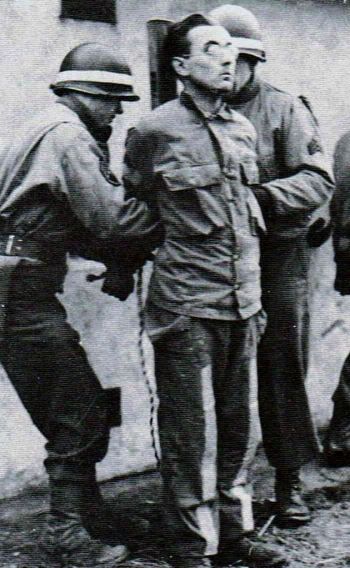Next question. What is it and why is it important?

My bet is that it’s one of those German made landing obstacles that were deployed in Normandy in 1944 to prevent gliders and airplains landing onthe fields. Preserved up to our days as historical artifact.
What was their nick name? Something like “Goering fingers” or “Goering pikes”?
I think your talking about “Rommel asparagus” Egorka.I would think that it would be a little thicker? But sounds like a good guess to me.
Not even close - wrong war for a start. I’ve actually visited this location and it’s a surprisingly moving monument.
Talking about Glider Pilots, and old gliding instructor of mine (sadly since deceased) came over to England as a PoW and as his home was in the former East Germany didn’t fancy going back. He had also done a lot of gliding prewar, and did some of the first cross country flights in the UK postwar. Anyway, he’s landed in a farmer’s field and so Farmer Giles wanders over for a chat…
FG: Ooo Arr, you be lucky you didn’t land here last week, we had those big metal spikes up to stop Germans landing in gliders.
SN: It seems you haff taken zem away a bit too suhn!
(I should point out that Siegfried had a very thick German accent when I knew him, over 50 years later!)
WW1, France, Somme, vicinity of Beaumont Hamel: The Danger Tree or the Tree of Death.
We are observing a preserved original WW 1 artifact, which probably marks the limit of the advance of the Newfoundland Regiment, which was part of the 88th Infantry Brigade within the 29th Division.
Direct link is located here:
http://www.ww1battlefields.co.uk/somme/images/newf/newf_dangertree.jpg
That’ll do it.
110%
The tennis court is supposed to be in there according to captions I’ve seen, but I don’t know exactly where.
A virtual jar of marmalade will arrive shortly by electronic transmission. If it doesn’t arrive, please contact my ISP as it’s not my fault if it won’t fit down the wire. 
Spot on. I was at the battlefield over the summer (the whole place has been preserved) and it’s incredibly moving. The danger tree is itself only 2-3 meters beyond the front line of the Newfoundland trench system, with that discoloured band of grass perhaps 10m in front marking the German front line. The line of trees in the background marks where the objective for the first day was - there is one cemetery within it, along with a memorial to the Scottish division who eventually took it, and just out of the photo there are two more cemeteries on the battlefield to left and right. In that one attack, the Newfoundland regiment took around 91% casualties - spectacularly bad, even allowing for the fact that this took place on the worst day in the history of the British Army.
And now – something completely different, honorable ladies and gentlemen:

Hopefully, all combat-pet fans will be delighted with this everlasting symbol of genuine and truly mutual friendliness and sincere gratitude. 
Therefore be so kind and give us your answers concerning identity of previously presented characters, and submit the time and place of origin of this touching scene.
This is Wojtek.
a Syrian brown bear cub adopted by soldiers of the 22 Kompania Zaopatrywania Artylerii (22nd Artillery Supply Company) of the Polish II Corps. During the Battle of Monte Cassino, Wojtek helped to move ammunition.
http://en.wikipedia.org/wiki/Wojtek_(soldier_bear)
Yes, my dear Mr. Egorka! Wojcieh, or Voytek the Battle Bear, who enjoyed a cigarette and a bottle of cold beer and who was capable to carry more mortar rounds than any other soldier indeed was our mysterius personality. 
Additional information about this incredibly lovely personality you will be able to find here:
http://www.mailonsunday.co.uk/news/article-510452/The-hero-bear-went-war-loved-smoke-beer.html
You have your well-deserved turn again! 
OK. Thank you.
Here is my next question:

Year, place and maybe a bit on what those guy might have been doing during the war.
Well, we have to start with something… Therefore here is my first offer, my dear Mr. Egorka: The last unit of the Wehrmacht (Wettertrupp) to surrender in the 2nd world war, 4th of September 1945, Rijpfjorden, northernmost part of the Nordaustlandet, Svalbard (Spitzbergen). 
I’m going to take a stab in total darkness and guess that these were Wehrmacht weathermen rounded up in Greenland around late 1941 or early 1942 by the US Coast Guard…
Wow. Good both of you, guys.
But I have to say that honorable Nickedfresh is 100% right, which makes him the winner.
Mr.Librarian in the mean while get viewers sympaty prise and lot of affectionate glaces from the cheerleaders in cute skirts.
Nickedfresh, we await to be puzzled! 
Okay, fortunately I have a store of pics. Hopefully, they’re not too easy this time. 
Edit: I appear to have deleted most of them. 
Wait one!
:oops:
Okay, here:

Sainte-Marie-aux-Mines, France.
Shortly before 10.04 a.m., 31 January 1945.
Execution of Eddie Slovik, the only American soldier executed for desertion in WWII.
Opps… It was my first guess, but I thought he looked different and did not look it up…
Gentlemen, you are incorrect. 
Pvt. Eddie Slovik’s story of his unjust execution is here.
That’s not Slovik…

